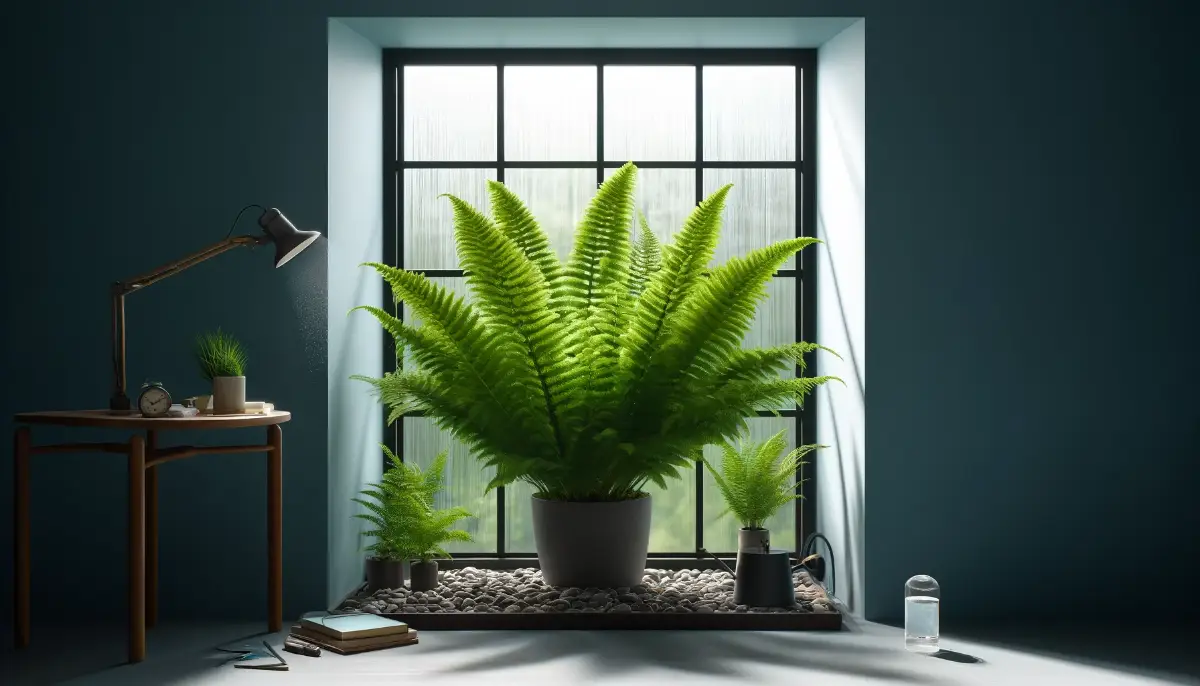Cat Palm, scientifically known as Chamaedorea cataractarum, is a popular indoor plant known for its lush, tropical appearance. Originating from the dense rainforests of Mexico and Central America, this palm is favored for its ability to thrive indoors with the right care.
Unlike many other palms, the Cat Palm does not form a trunk but grows in dense clusters of green fronds, making it an attractive choice for adding a touch of greenery to any space.
This palm is relatively easy to care for and can adapt well to indoor environments, making it a suitable choice for both novice and experienced plant enthusiasts. Its graceful, arching fronds can enhance the aesthetic appeal of homes and offices while also contributing to improved air quality.
By understanding its specific light, water, and soil needs, you can ensure that your Cat Palm remains healthy and vibrant year-round.
Choosing the Right Location
Selecting the optimal location for your Cat Palm is crucial to its health and growth. Here are the key considerations:
Light Requirements
Bright, Indirect Light
- Cat Palms thrive in bright, indirect light. Position them near a window where they can receive filtered sunlight throughout the day.
- Direct sunlight can scorch the leaves, causing brown tips and edges. Use sheer curtains or place the plant a few feet away from south- or west-facing windows to protect it.
Low Light Tolerance
- While Cat Palms prefer bright light, they can tolerate low light conditions. In low light, the plant’s growth may slow down, and it may produce fewer fronds.
- Ensure the plant receives at least some natural light daily. If natural light is insufficient, consider supplementing with fluorescent or LED grow lights.
Temperature and Humidity
Ideal Temperature Range
- Cat Palms thrive in temperatures between 65-80°F (18-27°C). They prefer a stable environment without significant temperature fluctuations.
- Avoid placing the plant near drafts, heating vents, or air conditioning units, as sudden temperature changes can stress the plant.
Humidity Levels
- Cat Palms prefer higher humidity levels, similar to their native tropical habitat. Aim for a humidity level of around 50% or higher.
- Increase humidity by placing a humidifier nearby, setting the plant on a pebble tray filled with water, or misting the fronds regularly.
- During winter, indoor air can become very dry due to heating systems. Monitor humidity levels and take steps to maintain a comfortable environment for your Cat Palm.
Planting Cat Palm
Proper planting is essential to ensure the healthy growth and development of your Cat Palm.
Soil Requirements
Well-Draining Potting Mix
- Use a high-quality, well-draining potting mix to prevent waterlogging, which can lead to root rot. A mix formulated for palms or a standard houseplant mix with added perlite or sand for improved drainage is ideal.
- Avoid heavy, clay-based soils that retain too much moisture.
Preferred Soil pH
- Cat Palms thrive in slightly acidic to neutral soil with a pH range of 6.0 to 7.0. Most commercial potting mixes fall within this range, but you can test the pH and adjust if necessary.
Pot Selection
Choose a Pot with Drainage Holes
- Ensure the pot has adequate drainage holes to allow excess water to escape. This helps prevent water from accumulating at the bottom, which can cause root rot.
- Use a saucer under the pot to catch any excess water, but empty it regularly to avoid stagnant water.
Size: Large Enough to Accommodate Growth
- Select a pot that is appropriately sized for your Cat Palm. The pot should be large enough to accommodate the root ball with some room for growth but not excessively large.
- As a general rule, choose a pot that is 2-3 inches larger in diameter than the current one if repotting.
Planting Steps
Preparing the Pot
- Place a layer of small rocks or broken pottery at the bottom of the pot to enhance drainage.
- Fill the pot partially with the potting mix, leaving enough space for the root ball.
Transplanting the Palm
- Gently remove the Cat Palm from its current container, being careful not to damage the roots.
- Loosen the roots slightly if they are tightly bound. This encourages them to spread out in the new pot.
Positioning and Filling
- Place the Cat Palm in the center of the pot. Adjust the height so that the top of the root ball is about an inch below the rim of the pot.
- Fill in around the root ball with potting mix, gently pressing it down to eliminate air pockets. Avoid burying the plant too deeply; the root ball should be just covered with soil.
Watering
- Water the Cat Palm thoroughly after planting to help settle the soil and establish the roots.
- Ensure that water drains freely from the bottom of the pot. Discard any excess water collected in the saucer.
Placement
- Place the newly potted Cat Palm in a location with appropriate light, temperature, and humidity conditions as previously described.
How to Watering Chamaedorea Cataractarum
Proper watering is crucial for maintaining the health of your Cat Palm.
Consistent Moisture
- Water when the top inch of soil is dry, usually about once a week.
- Adjust frequency based on seasonal changes: more in spring/summer, less in fall/winter.
Distilled or Rainwater
- Use distilled or rainwater to avoid chlorine and fluoride found in tap water.
- If using tap water, let it sit for 24 hours before using.
Even Soaking: Water thoroughly until water drains from the bottom. Discard excess water in the saucer.
Deep Watering: Occasionally water deeply to ensure roots get adequate moisture.
Signs of Improper Watering
Overwatering Symptoms: Yellowing leaves, mushy roots, musty smell, fungus gnats.
Underwatering Symptoms: Brown leaf tips, wilting, slow growth, dry soil.
Organic Fertilizing Tips for Cat Palm
Using organic fertilizers provides natural nourishment for your Cat Palm. Here are some concise tips:
Types of Organic Fertilizers
Compost is a great option, and you can apply a thin layer on top of the soil or mix it in. Worm castings are also beneficial; simply mix them into the soil or use them as a top dressing. Fish emulsion offers a quick nutrient boost—dilute it according to instructions and apply it as a soil drench. Seaweed extract enhances growth and stress resistance; use it as a foliar spray or soil drench, following the dilution guidelines.
Fertilizing Schedule
During the growing season in spring and summer, feed your Cat Palm monthly with a balanced organic fertilizer. In the dormant season, fall and winter, reduce feeding to every two to three months as the plant’s growth slows down.
Application Tips
Ensure you use the proper dosage by following the package instructions to avoid over-fertilizing. Distribute the fertilizer evenly around the root zone and water the plant after applying granular fertilizers. Monitor your Cat Palm’s health and adjust feeding based on its response.
Pruning and Maintenance
Proper pruning and regular maintenance are essential for keeping your Cat Palm healthy and attractive. Here’s how to do it:
Pruning
Remove Dead or Yellowing Fronds
- Regularly inspect your Cat Palm and remove any dead or yellowing fronds. This helps direct the plant’s energy to healthy growth and prevents potential pest infestations.
- Use clean, sharp scissors or pruning shears to make clean cuts at the base of the affected fronds.
Trim Brown Tips
- If the leaf tips turn brown due to low humidity or other factors, trim the brown edges with scissors. Cut just outside the healthy green tissue to avoid further damage.
Thin Out Crowded Growth
- If your Cat Palm becomes too dense, thin out some of the fronds to improve air circulation. This prevents fungal infections and promotes healthier growth.
Cleaning
Dust the Leaves
- Regularly wipe the leaves with a damp cloth to remove dust. This allows the plant to photosynthesize more efficiently and keeps it looking vibrant.
Inspect for Pests
- Regularly check your Cat Palm for signs of pests such as spider mites, scale, and mealybugs. If you spot any, treat the plant promptly with insecticidal soap or neem oil.
General Maintenance
Rotate the Plant
- Rotate your Cat Palm periodically to ensure even growth and exposure to light on all sides. This prevents the plant from leaning towards the light source.
Monitor Soil and Roots
- Check the soil and root health occasionally. If you notice roots circling the pot or coming out of the drainage holes, it may be time to repot the plant into a larger container with fresh soil.
Maintain Humidity
- Keep the humidity level consistent around your Cat Palm. Use a humidifier, mist the leaves regularly, or place the plant on a pebble tray with water to maintain adequate humidity.
Propagation
Propagating your Cat Palm can help you expand your collection or share the plant with others. Here’s how to propagate it effectively:
Methods of Propagation
Division of Clumps
- The most common and reliable method for propagating Cat Palms is by dividing the clumps.
Seed Propagation
- Though less common and more time-consuming, you can also propagate Cat Palms from seeds if available.
Steps for Division
Prepare the Plant
- Water the Cat Palm thoroughly the day before you plan to divide it. This helps reduce stress on the plant and makes it easier to separate the roots.
Remove the Plant from the Pot
- Gently remove the Cat Palm from its pot. If the plant is large, you may need help to avoid damaging the fronds or roots.
Divide the Clumps
- Carefully separate the clumps of the plant. Each clump should have a healthy root system and several fronds. Use a clean, sharp knife if necessary to cut through thick roots.
Replant the Divisions
- Plant each division in its own pot filled with a well-draining potting mix. Ensure the root ball is covered with soil and water thoroughly.
Post-Division Care
- Place the newly potted divisions in a location with bright, indirect light. Keep the soil consistently moist but not waterlogged until the plants establish new growth.
- Maintain high humidity around the new plants to help them acclimate and reduce transplant shock.
Seed Propagation (Optional)
Harvest and Clean Seeds
- If you have access to Cat Palm seeds, clean them to remove any fruit pulp. Soak the seeds in water for 24 hours to soften the outer shell.
Sow the Seeds
- Plant the seeds in a potting mix designed for seed starting, burying them about half an inch deep. Keep the soil moist and warm (around 75-85°F or 24-29°C).
Germination
- Be patient, as germination can take several weeks to a few months. Keep the soil consistently moist and maintain high humidity.
Transplanting Seedlings
- Once the seedlings have developed a few fronds and a strong root system, transplant them into individual pots with regular potting mix. Care for them as you would a mature Cat Palm.
Common Problems and Solutions
Caring for a Cat Palm can sometimes present challenges. Here are common problems and their solutions:
Yellowing Leaves
Causes
- Overwatering or underwatering
- Low humidity
- Nutrient deficiencies
Solutions
- Overwatering: Ensure the soil drains well and water only when the top inch of soil is dry. Empty the saucer under the pot after watering.
- Underwatering: Increase watering frequency and ensure consistent soil moisture.
- Low Humidity: Increase humidity using a humidifier, misting the leaves, or placing the plant on a pebble tray with water.
- Nutrient Deficiencies: Feed the plant with a balanced, organic fertilizer according to the recommended schedule.
Brown Leaf Tips
Causes
- Low humidity
- Over-fertilization
- Poor water quality
Solutions
- Low Humidity: Raise humidity levels around the plant.
- Over-fertilization: Flush the soil with water to remove excess fertilizer salts. Adjust fertilization practices to recommended levels.
- Poor Water Quality: Use distilled or rainwater instead of tap water, which may contain harmful chemicals.
Pests
Common Pests:
- Spider mites, scale, mealybugs
Solutions
- Spider Mites: Increase humidity and regularly mist the plant. Use insecticidal soap or neem oil to treat infestations.
- Scale: Remove visible scale insects with a cotton swab dipped in rubbing alcohol. Apply insecticidal soap or neem oil as needed.
- Mealybugs: Wipe off mealybugs with a cotton swab dipped in rubbing alcohol. Treat the plant with insecticidal soap or neem oil.
Diseases
Root Rot
- Causes: Overwatering and poor drainage.
- Solutions: Ensure the pot has drainage holes and use well-draining soil. Water only when the top inch of soil is dry. If root rot is detected, remove affected roots and repot the plant in fresh soil.
Fungal Infections
- Causes: High humidity and poor air circulation.
- Solutions: Improve air circulation around the plant and avoid water on the leaves. Treat with a fungicide if necessary.
Slow Growth
- Causes: Insufficient light; Lack of nutrients;Improper watering
- Solutions: Move the plant to a brighter location with indirect sunlight; Fertilize regularly with a balanced, organic fertilizer; Adjust watering practices to maintain consistent soil moisture.
By addressing these common problems with appropriate solutions, you can ensure that your Cat Palm remains healthy and thriving. Regular monitoring and timely intervention are key to preventing and resolving issues.
FAQs about Cat Palm (Chamaedorea cataractarum)
How often should I water my Cat Palm?
Water your Cat Palm when the top inch of soil feels dry, typically about once a week. Adjust the frequency based on the season and humidity levels.
What type of light is best for a Cat Palm?
Cat Palms thrive in bright, indirect light. They can tolerate lower light conditions but will grow more slowly.
How can I increase humidity for my Cat Palm?
Increase humidity by using a humidifier, misting the leaves regularly, or placing the plant on a pebble tray filled with water.
Why are the tips of my Cat Palm’s leaves turning brown?
Brown tips can be caused by low humidity, over-fertilization, or poor water quality. Increase humidity, adjust fertilization practices, and use distilled or rainwater.
How do I fertilize my Cat Palm organically?
Use compost, worm castings, fish emulsion, or seaweed extract. Feed monthly during the growing season and reduce to every two to three months in the dormant season.
What should I do if my Cat Palm has yellowing leaves?
Yellowing leaves can indicate overwatering, underwatering, low humidity, or nutrient deficiencies. Adjust watering practices, increase humidity, and fertilize appropriately.
How can I propagate my Cat Palm?
The most common method is by dividing clumps. Carefully separate the plant into smaller clumps with roots and replant in fresh soil.
What pests are common on Cat Palms, and how do I treat them?
Common pests include spider mites, scale, and mealybugs. Treat infestations with insecticidal soap, neem oil, or by wiping the pests off with rubbing alcohol.
Can Cat Palms be grown outdoors?
Cat Palms can be grown outdoors in USDA zones 10-11 where temperatures are consistently warm. They prefer shaded or partially shaded areas.
How do I prune my Cat Palm?
Remove dead or yellowing fronds with clean, sharp scissors or pruning shears. Trim brown leaf tips just outside the healthy green tissue and thin out crowded growth to improve air circulation.










